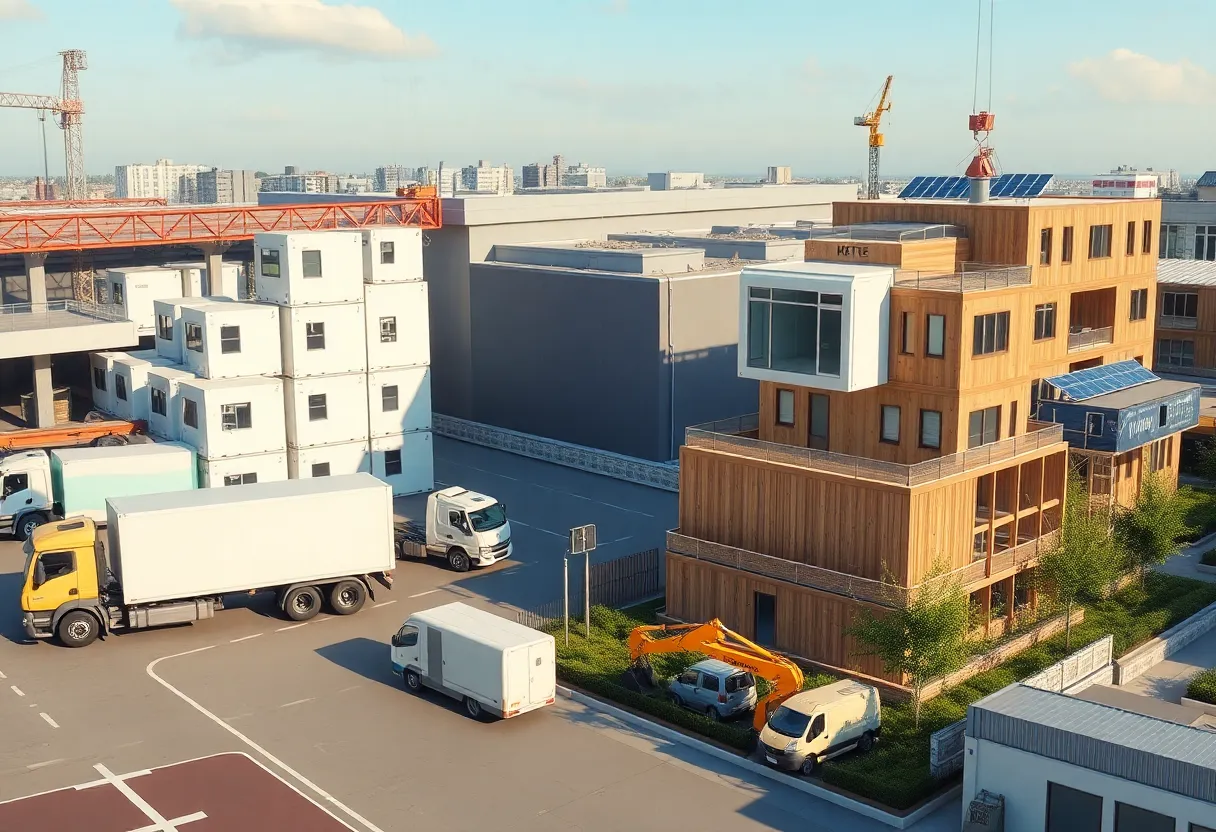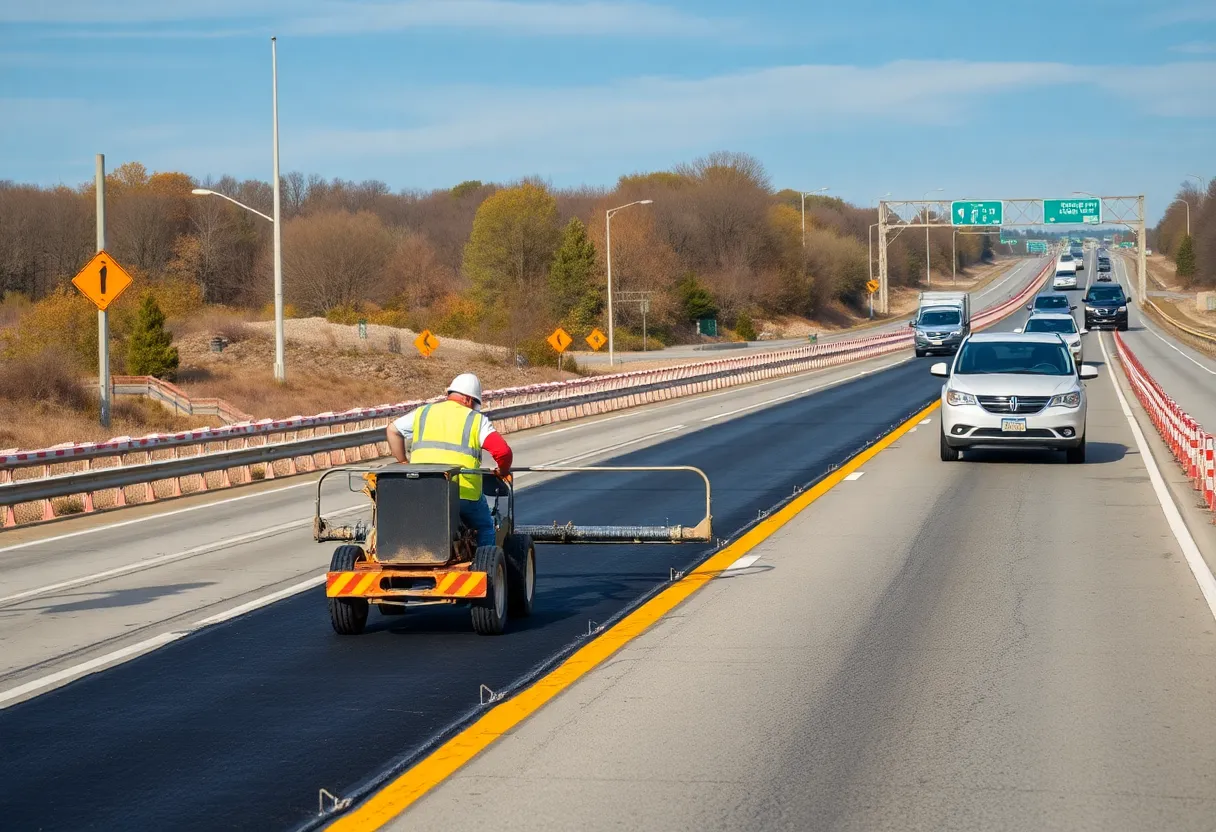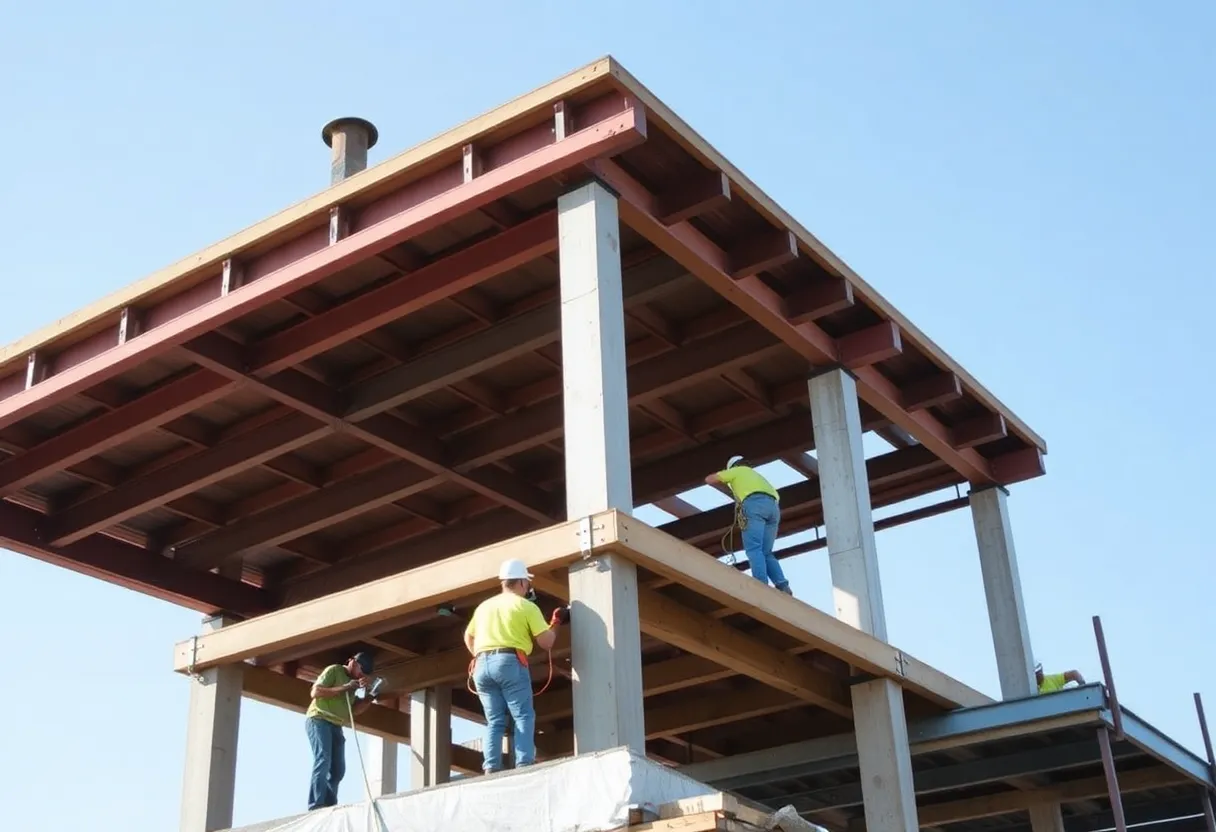Global, August 22, 2025
News Summary
A broad study of the modular construction sector covering 700+ companies across 50+ countries finds rapid expansion and clear profit patterns. Companies that combine factory manufacturing with on‑site assembly report substantially higher EBITDA than manufacturers-only players. Modular methods reduce on‑site labor, shorten schedules, and cut waste when systems and logistics are optimized. Cities are testing zero‑emission sites using electric machinery and battery power, while architects deliver near net‑zero buildings that pair off‑site construction with low‑carbon site operations. Success is tied to repeatable building systems, value‑chain control, digital integration and careful, demand‑led scaling.
Modular construction ramps up worldwide; integrated firms earn higher margins as cities push zero‑emission and net‑zero projects
Key point: A wide new study of the modular construction sector shows rapid growth across more than 700 companies and finds that firms that combine manufacturing and on‑site assembly tend to earn much higher profits. At the same time, cities are testing zero‑emission construction sites and architects are delivering buildings with near net‑zero performance, showing how off‑site building methods and cleaner sites can work together.
What the study found
A large analysis examined modular builders that make finished parts in factories and then assemble them on site. The study used a proprietary database of more than 700 companies across 50+ countries. It focused on true modular elements—3D volumetric modules, 2D panels and bathroom pods—and left out simple prefabricated pieces and precut materials.
The market is highly fragmented. A small share of firms are large, but the long tail includes more than 500 players with under €50 million in revenue. Only about 5–10% of companies have revenues above €500 million. Many firms are long‑established—more than 100 of them have operated for 50+ years—while over 200 were founded in the past 20 years.
Margins and business models
Profitability varies a lot by how a company operates. Firms that both manufacture modules and handle on‑site assembly post much higher earnings: about 15–20% EBITDA on average. Companies that only manufacture modules have much lower results—around 5% EBITDA. Across players focused on permanent buildings, a weighted average sits near 7% EBITDA.
The study shows a few clear patterns tied to profit: firms that own a repeatable building system, control key parts of the value chain, and scale carefully tend to succeed. Rental or combined sales+rental models also boost factory use and margins.
Where modular adds value
Modular can cut on‑site labor by up to 40% and shorten schedules by as much as 50%, when projects are well planned. It also lowers waste and can reduce CO2 when factories and logistics are optimized. Specialized asset types—hotels and healthcare—show higher profit potential (hospitality around 19% EBITDA), while single‑family and multiunit housing are lower (about 8% EBITDA each).
Materials, complexity and product types
Globally, firms focus mainly on steel (≈42%) and timber (≈38%), with concrete less common (≈11%). Companies that standardize on one material often perform better. About half of firms work on low‑complexity buildings, and those projects tend to yield the best margins because repeatability lets factories do most of the work (low complexity EBITDA ≈19%; medium ≈14%; high ≈5%). 3D volumetric makers earn slightly more on average (≈8%) than 2D panel makers (≈6%).
Scale, risks and digital tools
Historically modular stayed local because of codes, preferences and transport. Now, better standardization, longer‑distance logistics and digital tools (BIM, parametric modeling, 3D configurators) make regional and cross‑border work easier. But the study warns against building large automated factories before securing steady demand and stresses tight design‑to‑manufacture integration.
City action and clean construction tests
Cities are pairing off‑site building with cleaner sites. One pilot urban project converted a busy space using only electric heavy machinery. That work saved about 35,000 litres of diesel and roughly 92.5 tonnes of CO2, equal to taking roughly 20 cars off the road for a year, and cut noise and pollution so shops could keep doors open during work. The pilot could not be fully emission‑free because a propane burner was still used, but overall emissions were reduced by roughly 99% compared with a regular diesel approach.
Battery solutions are also being trialed to replace diesel generators. One compact battery system in active use in a major city region claims per‑deployment CO2 reductions of about 85%, noise at around 1/30th of a diesel generator, and emission savings comparable to removing several hundred cars per deployment. That system is already used by many big developers in high‑density markets.
Built examples: a net‑zero mixed‑use building in Oslo
A new mixed‑use building completed in April 2024 demonstrates how design and systems can deliver deep cuts in operational needs for heating, cooling and ventilation. The project uses geothermal wells, rooftop solar, a low‑energy heat pump system and natural ventilation driven by an angled façade. It achieves a triple zero ambition for heating, cooling and ventilation energy and cuts more than 50% of CO2 from materials, transport and energy versus a standard building. The building combines shops and restaurants at street level, five floors of offices, and apartments above, and reuses a former parking site to create a new public square.
What this means for the sector
The modular market still represents a small share of total construction, so there is room for many players. Success looks linked to owning a repeatable system, running manufacturing and assembly together, using digital tools to connect design and production, and scaling only after demand is proven. For cities and developers, modular plus clean site tech can cut time, labor, waste and emissions—but careful planning and coordination across many stakeholders remain critical.
FAQ
Q: What is modular construction?
A: Modular construction makes large building parts in a factory and assembles them on site. This includes 3D modules, 2D panels and bathroom pods for permanent buildings.
Q: How many companies operate in modular construction?
A: The study covered a database of more than 700 firms across over 50 countries, including both long‑established and recently founded companies.
Q: Do modular builders save time and labor?
A: Yes. Well‑planned modular projects can cut on‑site labor by up to 40% and shorten construction timelines by up to 50%.
Q: Which firms are most profitable?
A: Firms that combine manufacturing with on‑site assembly generally post higher EBITDA (around 15–20%) than manufacturers only (around 5%). Firms focused on specialized assets like hotels also show higher margins.
Q: Can modular construction reduce emissions?
A: Modular can reduce waste and emissions when factories, logistics and materials are optimized, and it pairs well with zero‑emission site equipment and renewable power for larger carbon benefits.
Q: What should a company do before scaling modular production?
A: Prove a repeatable building system on several projects first, secure steady demand, and integrate design, manufacturing and logistics digitally to avoid costly missteps.
Key features at a glance
| Feature | What it means | Data or example |
|---|---|---|
| Market scope | Size and spread of firms | 700+ companies in 50+ countries |
| Profit drivers | Integration and repeatable systems | Manufacture+assembly EBITDA ≈ 15–20% vs manufacturing-only ≈ 5% |
| Time and labor | Faster build, less on‑site staff | Up to 50% faster; up to 40% less labor |
| Materials mix | Primary structural choices | Steel ≈42%; Timber ≈38%; Concrete ≈11% |
| Zero‑emission test | Electric heavy machines and batteries on site | Saved 35,000 L diesel and ~92.5 t CO2 in a pilot; battery systems cut ~85% emissions per deployment |
| Built example | Net‑zero energy building features | Geothermal, PV, natural ventilation; >50% CO2 reduction vs standard building |
Deeper Dive: News & Info About This Topic
Additional Resources
- McKinsey: Putting the pieces together — Unlocking success in modular construction
- Wikipedia: Modular construction
- BBC Future: The Scandinavian way to zero‑carbon construction
- Encyclopedia Britannica: Zero‑carbon construction (search)
- Designboom: Snøhetta Vertikal Nydalen, Oslo (Apr 27, 2024)
- Google Search: Snohetta Vertikal Nydalen Oslo
- Electrive: Oslo’s first zero‑emissions construction site in action
- Google News: zero‑emission construction site Oslo
- Noticias Ambientales: Circular construction — From use‑and‑throw‑away to reuse and transform buildings
- Google Scholar: circular construction reuse transform buildings
Author: Construction FL News
The FLORIDA STAFF WRITER represents the experienced team at constructionflnews.com, your go-to source for actionable local news and information in Florida and beyond. Specializing in "news you can use," we cover essential topics like product reviews for personal and business needs, local business directories, politics, real estate trends, neighborhood insights, and state news affecting the area—with deep expertise drawn from years of dedicated reporting and strong community input, including local press releases and business updates. We deliver top reporting on high-value events such as the Florida Build Expo, major infrastructure projects, and advancements in construction technology showcases. Our coverage extends to key organizations like the Associated Builders and Contractors of Florida and the Florida Home Builders Association, plus leading businesses in construction and legal services that power the local economy such as CMiC Global and Shutts & Bowen LLP. As part of the broader network, including constructioncanews.com, constructionnynews.com, and constructiontxnews.com, we provide comprehensive, credible insights into the dynamic construction landscape across multiple states.





